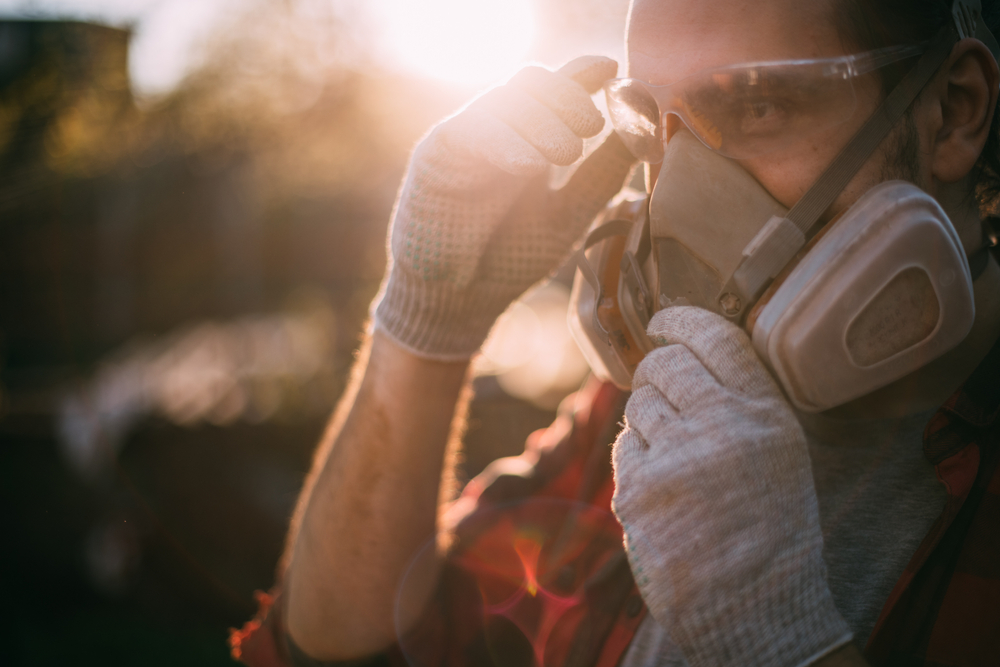The respiratory protection needs of many U.S. workers are not being met, according to a new report from the National Academies of Sciences, Engineering, and Medicine published February 10.
Many independent contractors and self-employed and “gig” workers are not considered employees or employers and are not covered by Occupational Safety and Health Administration (OSHA) regulations, according to the National Academies’ analysis. Many workers exposed on the job to inhalation hazards like wildfire smoke or infectious diseases like COVID-19 may not have access to a respiratory protection program, the report also found.
“The need for appropriate respiratory protection has dynamically shifted as more workers and the public now must consider the need for this protection in their daily lives,” National Institute for Occupational Safety and Health (NIOSH) Director John Howard, MD, said in a statement.
“The recommendations in this report are critical to spurring further action to develop a coordinated and robust plan to address this challenge.”
The report, “Frameworks for Protecting Workers and the Public from Inhalation Hazards,” provided recommendations for the oversight and guidance of respiratory protection across several federal agencies.
The report identified several gaps in respiratory protection:
- While the public may use face coverings, medical masks, and respirators, none has been approved by any federal agency for use other than in occupational settings.
- There is no formal system of guidance and education for the public on when and how to use a respiratory protective device and which devices individuals, including children, should wear.
- A lack of guidance and widespread misinformation contributed to confusion and disagreement during the COVID-19 pandemic regarding the need to use protective devices and the level of protection different kinds of devices provided.
- The COVID-19 pandemic also exposed problems in the existing supply chains to meet the demands for respiratory protective devices during public health emergencies.
The report cited lessons for the United States from South Korea’s experience with outbreaks. Following the 2015 Middle East respiratory syndrome coronavirus (MERS-CoV) outbreak, the Korean government made policy changes in preparation for future epidemics. Steps taken by the Korean government enabled it to respond aggressively to the COVID-19 pandemic.
The Korean government also ensured supplies of respiratory protective devices by purchasing 80 percent of the available supply from Korean manufacturers, banning exports, and setting a price limit. Korean citizens could purchase two masks per person per week.
The report identified seven core functions of a federal framework for both expanded occupational and personal use of respiratory protection:
- Developing and approving respiratory protective devices, both improving the timeliness of NIOSH respirator testing and approval of occupational respirators and developing respiratory protection standards and an approval process for devices used by the public;
- Ensuring adequate coordination and authorities to protect the target community from inhalation hazards, ensuring that workers who are not currently protected by OSHA respiratory protection programs are adequately protected from inhalation hazards;
- Assessing hazards and determining the needs for respiratory protection;
- Determining the necessary respiratory protective devices;
- Ensuring availability and access pathways for respiratory protective devices, preparing for future large-scale needs for worker and public respiratory protection and coordinating stockpiling decisions;
- Engaging, informing, and ensuring access for the target community, developing guidance and education for public use of respiratory protection devices; and
- Incorporating life-cycle learning and continuous improvement.
The last recommendation would involve launching expanded NIOSH research and surveillance programs in consultation with OSHA and other federal agencies to better understand and meet the needs of workers facing inhalation hazards.

